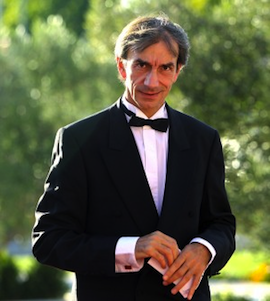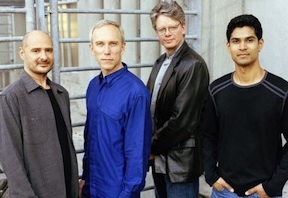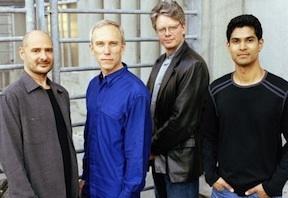
The Santa Rosa Symphony must be thrilled beyond belief. That orchestra finally took possession of its new home, the magnificent Weill Concert Hall in the Green Music Center at Sonoma State University, with the first subscription concert of the 2012–2013 season, playing Mozart’s Magic Flute overture, the premiere of a piece by composer in residence Edmund Campion, and Mahler’s Symphony No. 1 in D Major, the “Titan.”
Moving into a new concert hall is a major event for any orchestra. After performing for about 30 years in what’s widely regarded as a poor-sounding hall at the Wells Fargo Center for the Arts, it must also be something of a shock for Music Director Bruno Ferrandis and the musicians of the Santa Rosa Symphony (SRS) — a pleasant shock, of course.
For an orchestra, a good new hall is not just a different or better place to rehearse and perform. A hall can transform an orchestra; I have seen (well, heard) it happen to the Brabant Orchestra in the Netherlands (the regional orchestra in the area where I grew up and later worked as a music journalist), after it moved into the then-brand-new Frits Philips Music Center in Eindhoven in 1992. In a matter of a few seasons, the Brabant Orchestra became a completely different and much better ensemble.
Much has already been written in SFCV and other publications about the design and the acoustics of the Weill Hall, mostly in justified superlatives. Modeled after the Ozawa Hall at Tanglewood and designed by the same team of architect William Rawn and acoustician Lawrence Kirkegaard, the new concert venue at Sonoma State is a delightful, shoe-box-shaped space, filled with beautiful blond wood that is pleasant to the touch, and with balconies on four sides.
What I found remarkable is the intimacy of the space. The sight lines are great and the stage seems quite close.
In real life, the hall seems smaller than the pictures suggest; I wouldn’t have guessed that it can actually hold an audience of 1,400. All the same, the seats are comfortable and wide, and though six feet tall I had plenty of leg room. What I found remarkable is the intimacy of the space. The sight lines are great and the stage seems quite close, even from the rear balcony (generally speaking, my favorite spot in any concert hall), from where I heard Mahler’s First.
Intimate, Clear, Bright

The intimacy of the hall is reflected in the acoustics. The ppp-opening of the “Titan” sounded as soft as triple-piano indicates, though not distant. The orchestral sound is clear and bright and shows every detail, sometimes to a fault. The performance became an unexpected physical experience when I could actually feel the bass drum before I realized what was going on, and the same happened later with the contrabassoon and the double basses. Weill Hall is a most sensual concert venue; the hall resonates with and around the orchestra, yet it can also handle higher volumes, such as the opening of the fourth movement of the Mahler, or the giant crescendo a few minutes before the end of the first movement. In spite of the volume, the sound was never muddled or oppressive.
When asked after the performance, a member of the first violins section confirmed that the orchestra loves playing in the new hall but that the musicians are still physically settling into the space. For performers, a new hall requires a new way of listening to each other and playing together as an ensemble. It will take some time before these acoustical logistics have been worked out.
Campion blends the acoustic and electronic into what he calls “a new fusion of sonorities that sounds as one.”
After Mozart’s overture to The Magic Flute, with which the concert opened, the SRS played The Last Internal Combustion Engine, a concerto grosso for full orchestra, string quartet, and electronics by Edmund Campion (of Dallas, born in 1957), who wrote this piece especially for the SRS, Maestro Ferrandis, and the Kronos Quartet. In his composition, Campion blends the acoustic and electronic into what he calls “a new fusion of sonorities that sounds as one.” He was inspired by the history of the internal combustion engine, from its invention to its expected demise, when, hopefully during his own lifetime, the last internal combustion engine will leave the road.
The resulting work, which Campion also refers to as a “Concerto Grotesco,” is a highly rhythmic piece that propels forward, at times sounding like pure chaos and at other times — with an unaccompanied Kronos Quartet — like an early-classical string quartet but with all the notes wrong. Mostly color and atmosphere, its stark melodies move within a limited range, tumbling toward a surprising, but slightly gimmicky end, in which all orchestra members play small shakers. Maybe the dying hiss of that last combustion engine? I hope to hear The Last Internal Combustion Engine again; unfortunately for Edmund Campion and the Kronos Quartet, Weill Hall somewhat stole its thunder.

